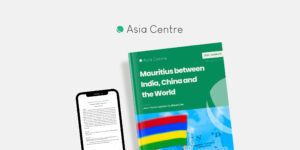Note n°21 de l’Observatoire de la Chine, par Dr. Saša Istenič (University of Ljubljana, Slovenia)
Over the five years of its existence, the 16+1 cooperation platform noticeably raised its visibility and became seen as a valuable economic and political instrument, which is furthering China’s Belt and Road initiative (BRI, 一带一路). The 16 Central and Eastern European (CEE) post-communist states (Albania, Bosnia and Herzegovina, Bulgaria, Croatia, Czech Republic, Estonia, Hungary, Lithuania, Latvia, Macedonia, Montenegro, Poland, Romania, Serbia, Slovakia, and Slovenia) have become essential partners in facilitating the construction of China’s flagship project. Ever since the first 16+1 summit held in Warsaw in 2012, which laid the foundations for future cooperation, the CEE countries have gained more weight in Chinese policy towards Europe. Likewise, as China has established itself in a position of an attractive regional investor, its role in the CEE countries’ foreign policies has visibly grown.
The rapid progress of institutionalization of the 16+1 framework, that followed the initial launch of a Permanent Secretariat at the Chinese Foreign Ministry and a setup of CEE national coordinators, is well reflected in the establishment of several secretariats and a number of associations and industry organizations coordinated by individual states (Table 1). The key decision-making instrument continues to be formed by the annual summits of heads of governments, which result in a long list of announcements on infrastructure and investment projects. It has been assessed that by mid-2017 over 60 percent of the measures set out in the 2016 summit have already been successfully implemented (MoFA PRC, 2017). This year’s annual summit – the sixth in a row – will be held in November in Budapest.
- Motivations and Developments
- 16+1: A Vehicle Endorsing China’s Soft Power
- Some Key Concerns
- Conclusion




